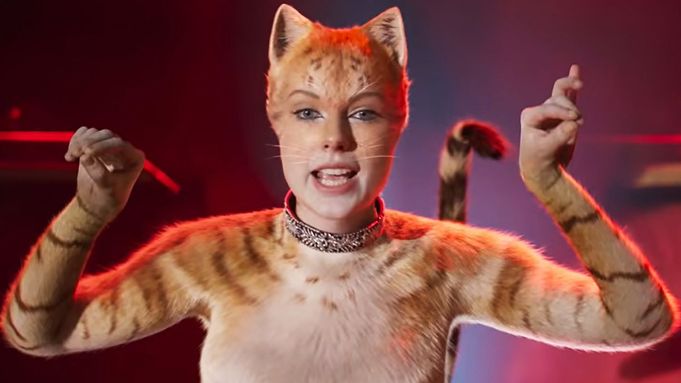Oracle After Hours: Cats, a movie so bad that it might just be good
January 23, 2020
I got rear-ended on the way to see Cats. It’s pretty fitting, because both the accident and the movie never should have happened. But mistakes are made when one goes too fast or doesn’t pay enough attention to the details. And Cats director Tom Hooper’s complete lack of focus led to the disaster that I witnessed in theaters.
Cats is a movie based on the Andrew Lloyd Webber musical of the same name, which itself is based on a collection of T.S. Eliot poems. Some may call the plot whimsical and psychedelic, others may see the chaotic musical numbers it as confusing and bizarre. But Cats is really all of those things at once, crammed into an hour and 50 minutes.
The little plot is, in a word, convoluted. The protagonist, Victoria (Francesca Hayward), is abandoned in an alley by her owner and welcomed into a group of felines called the Jellicle Cats. One by one, she is introduced to prominent members, including Jennyanydots (Rebel Wilson), the Rum Tum Tugger (Jason Derulo), and Bustopher Jones (James Corden), through song and dance. They are among the candidates for the annual Jellicle Ball, in which matriarch Old Deuteronomy (Judi Dench) chooses a cat to ascend to the Heavyside Layer for a new Jellicle life. Idris Elba’s Macavity schemes from behind the scenes to force Old Deuteronomy to make him the Jellicle choice.
None of this is at all easy to decipher for the viewer. Much of it is explained in the opening song “Jellicle Songs for Jellicle Cats,” a high-energy ensemble number that has the audience more focused on the dynamic choreography and plethora of characters introduced all at once. Information essential to understanding the movie is sprinkled throughout the lyrics, yet the song neglects to explain what a Jellicle cat is. I still have no idea.
Victoria seems to not only be the main character, but also a proxy for the audience, as we are introduced to the Jellicles together. However, her bland personality and Hayward’s flat, monotonous acting serve to make her a blank slate that viewers quickly grow bored of. More interesting characters, such as Jennyanydots, are whisked away by Macavity and have scant appearances after their introductory solos. Thus, scenes desired to be emotional and hard-hitting inspire little sympathy for such dull characters. But neither the plot nor the acting is the worst part of the movie.
The movie’s liberal, indiscriminate use of Computer Generated Imagery (CGI) makes Cats truly terrible, and has also placed the movie firmly into meme status. In the stage musical, leotards and makeup were used to transform actors into cats. For the movie, Hooper has done it digitally, plunging Cats deep into the uncanny valley in a way that completely removes the viewer from the experience. Frankly, it’s terrifying. The cat-human hybrids have furry feet and fingernails, and the skin-tight leotards used to map the actors’ movements lend to the perception that the naked cats are really just naked people. Rebel Wilson literally unzips her skin twice as Jennyanydots and gleefully bites the head off of CGI cockroach children. I understand that directors are keen to experiment with cutting-edge post-production techniques, but at some point, it goes too far. Cats barreled past that point and decided to keep going, and the movie is all the worse for it.
The score of the movie, however, somewhat redeems it. An impressive cast, ranging from Taylor Swift to Jennifer Hudson, finds a way to shine through their digital whiskers and confusing screenplays. Andrew Lloyd Webber’s original compositions feature many delights; the rousing chorus of “Mr. Mistofelees” brings much-needed energy to the screen and Hudson’s rendition of “Memory” is incredibly powerful.
Despite all its drawbacks, I thoroughly enjoyed my experience watching Cats. It is such a terrible movie that I couldn’t help but laugh at the unprofessionalism of it all, and I can’t wait to get a chance to watch it again.



